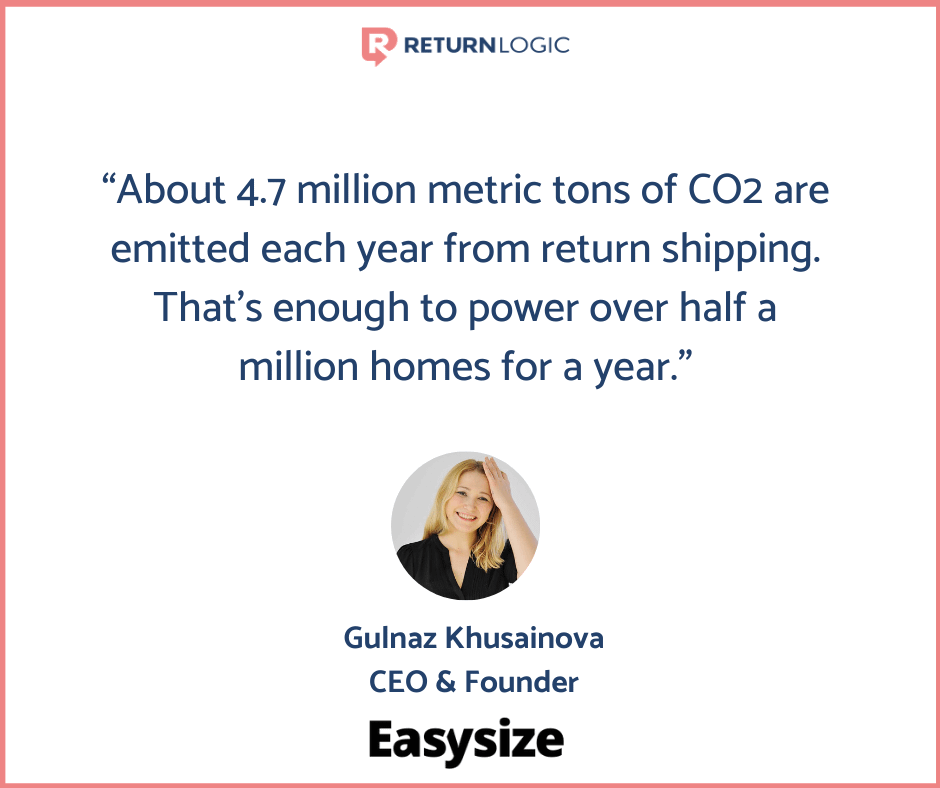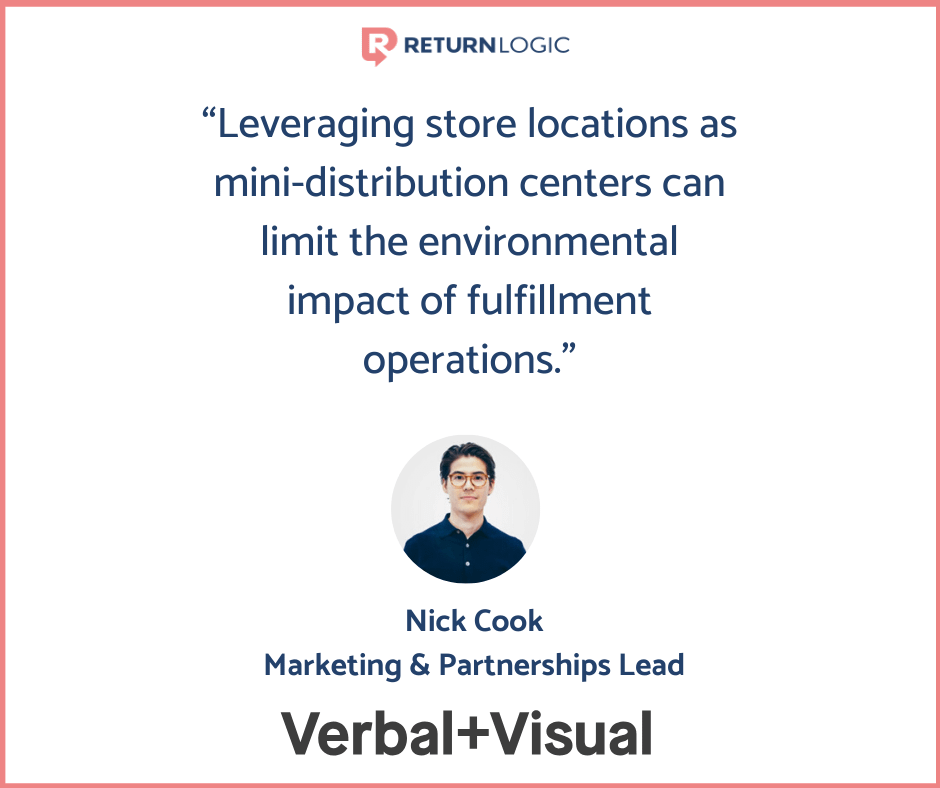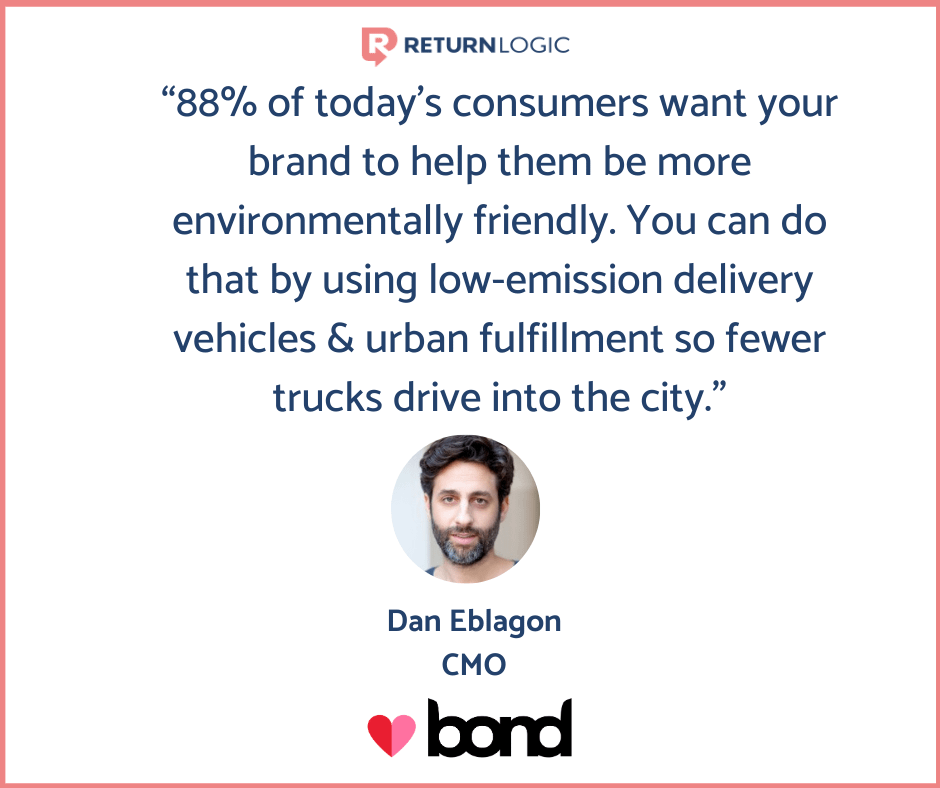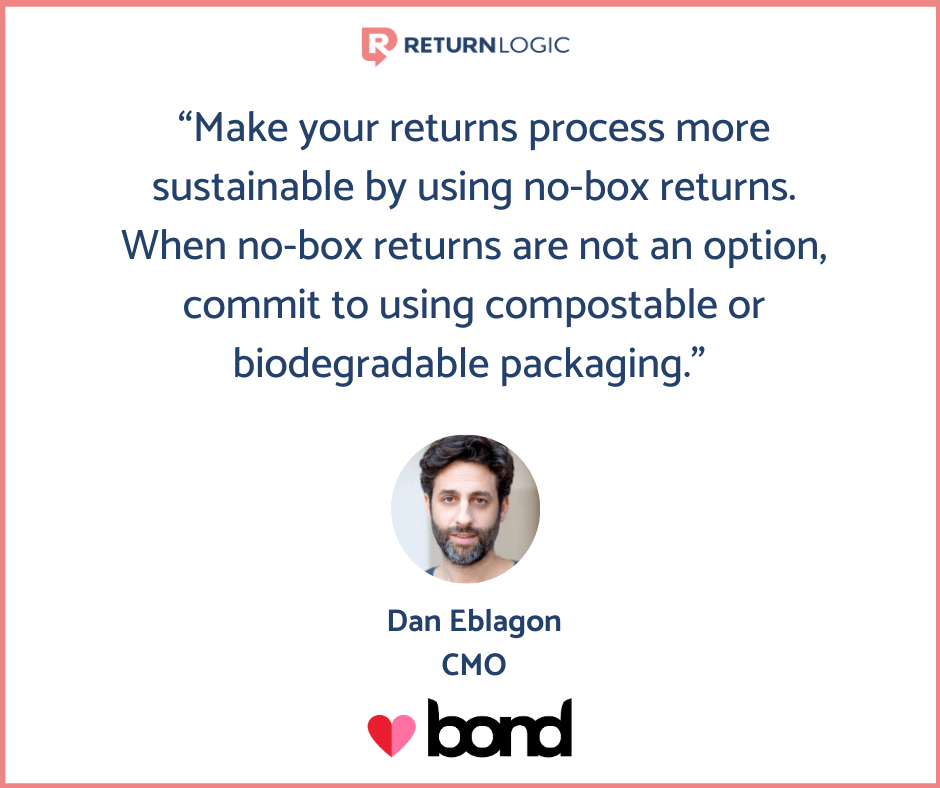The Environmental Impact of Returns in Ecommerce

Ecommerce returns are costly. They cost you sales, expenses of shipping and handling, and may even cost you a customer.
As #EarthDay turns 51 this year, we pause to consider the staggering costs that ecommerce returns have on our planet.
In this post, we feature insight from several industry experts who bring a unique perspective on the environmental impact of ecommerce returns:

Recently, our team had a conversation with Nick Cook, Marketing & Partnerships Lead at Verbal+Visual. He affirmed the ramifications of ecommerce on the planet and highlighted the role of environmental responsibility in the customer relationship.

The speed and convenience that shoppers have come to expect in ecommerce doesn’t come free. Returns and exchanges exponentially intensify the problem.
Returns in Ecommerce
Returns are often a neglected by-product of ecommerce. Without an established return management process, many online apparel brands feel blindsided when 20% to 30% of the merchandise they sell comes back as a return.
The new reality of ecommerce is that returns are a part of doing business. The problem is, returns are a sphere that has yet to be optimized.
Quantifying the Damage
Across the industry, roughly 5 billion tons of returned products per year get thrown into landfills. Less than half of returned merchandise resells at full price.
For one of our retailers, 30% of returned products in 2019 weren’t suitable for resale.
Packaging waste, particularly cardboard and plastic, is commonly cited as one of the most devastating repercussions of ecommerce.
Gulnaz Khusainova, Founder and CEO of Easy size, also emphasizes return shipping as an affliction to the environment.

Returns cause harm to the environment through scrapped products, packaging waste, and shipping emissions.
But there’s a lot we can do to lessen the impact.
How Can We Reduce the Impact of Ecommerce Returns on Our Environment?
Step #1: Supply Chain
Every journey begins with a single step. A good place to start is evaluating your supply chain – both the forward supply chain and the reverse chain. Transparency, communication, and measurable accountability are key to driving improvements.
As Cook explains, innovations in fulfillment can offer a more tailored customer experience and lessen the impact ecommerce has on the environment.

Cook continues, “Ecommerce brands that have access to a physical retail presence should consider implementing Buy Online, Pick Up In-Store (BOPIS). This limits the number of returns ultimately shipped to a fulfillment center and restocked or discarded – all of which reduces the overall environmental cost.”
Dan Eblangon, Chief Marketing Officer of Bond, a customer-centric 3PL specializing in hyper-local storage and same-day delivery, highlights the importance of low-emission delivery vehicles and neighborhood-based fulfillment hubs.

Truly optimal supply chains lower the costs of fulfillment and cause less harm to the greater ecosystem. BOPIS options are a great place to start and represent the beginning of powerful innovations in the ecommerce supply chain.
There’s also your return packaging to consider.

Step #2: Secondary Markets
Aftermarket solutions like B-Stock, Blinq, and BULQ provide retailers a competitive secondary market for returned or excess goods. This market allows companies to recoup as much value as possible from returned products and ultimately throw less away.
These marketplaces help retailers align their profits with their consciences.
Step #3: Reduce Return Rates
Aim to prevent returns before they occur. By reducing your return rate, you’ll reduce the emissions of returns shipping and physical waste going to landfills.
To achieve a lower return rate, emphasize the importance of the product page.
Include accurate information when developing product content to set clear expectations for the customer.
Ensuring your product description details the materials included with the product, instructions on how to care for it, and a sizing guide. You can use photography to outline the dimensions of the model as well.
Information presented about your products needs to be consistent, accurate, comprehensive, and easy to understand. Otherwise, customer expectations will be misinformed, and excess returns will occur.

Moving Forward
Ecommerce can have severe negative ecological consequences. Apparel is a particularly resource-intensive category.
Product returns generate substantial waste in landfills and amplify shipping emissions. And shoppers are increasingly paying attention.
With help from expert partners, we can make ecommerce a little bit greener.



